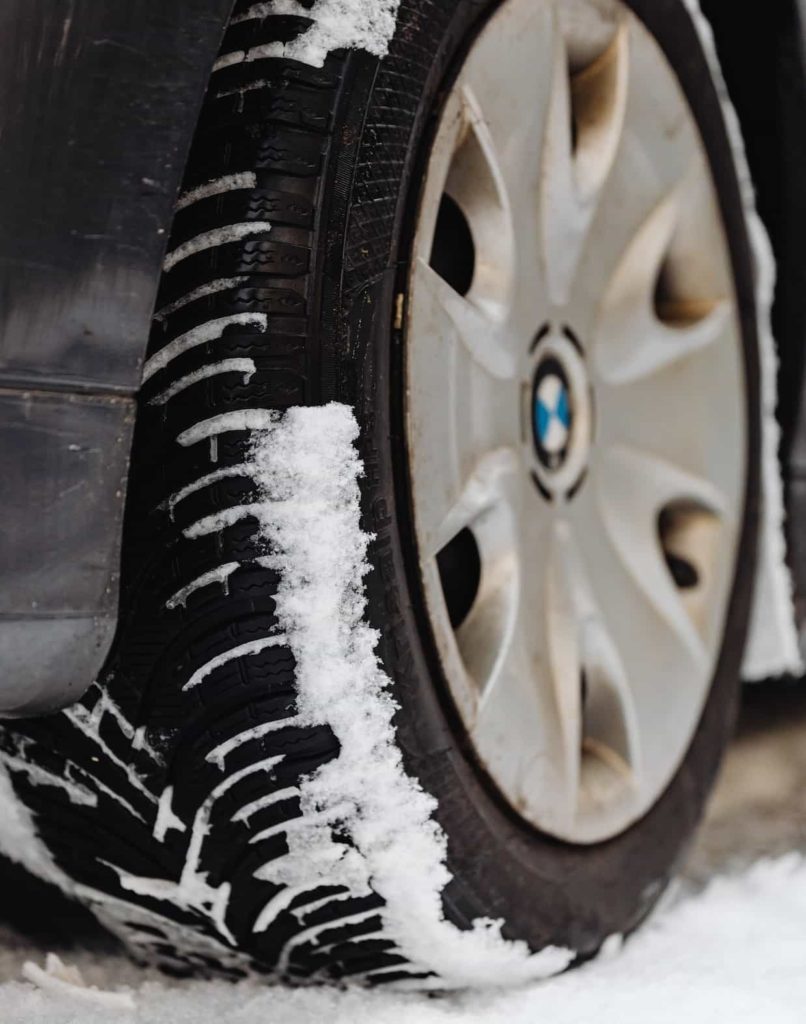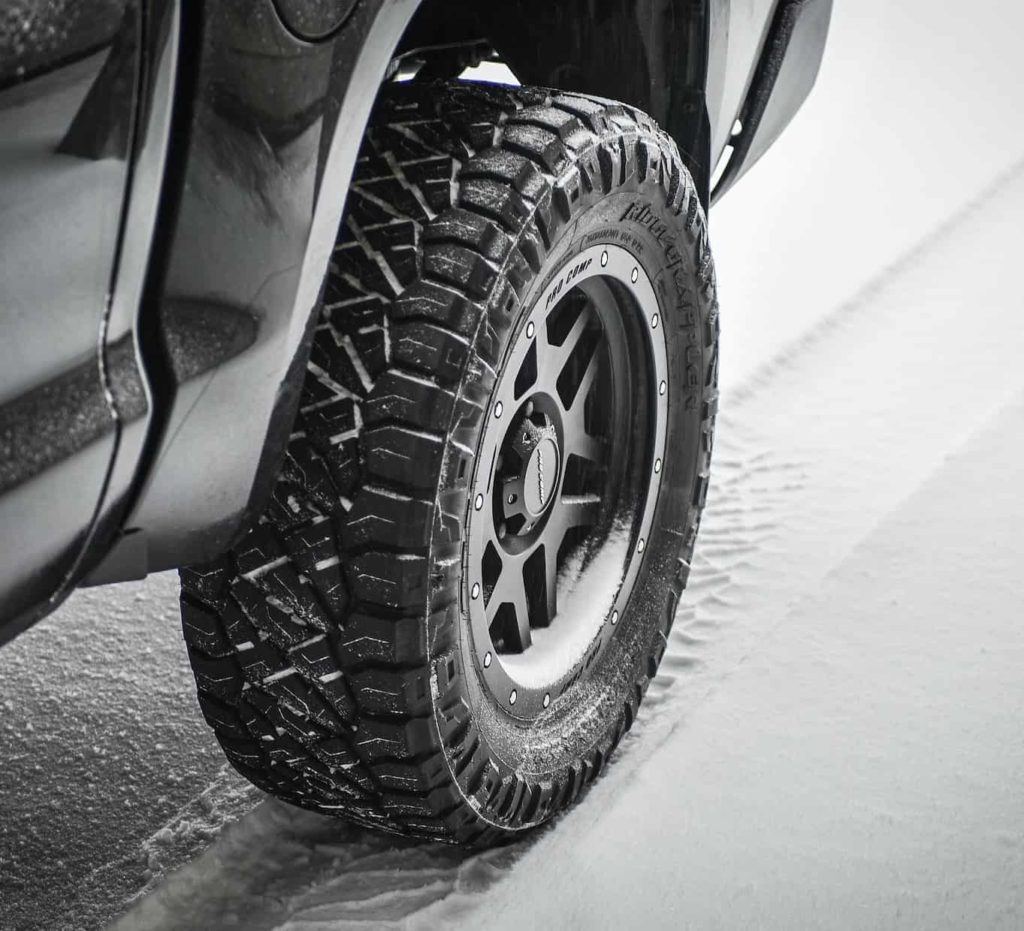Tire Grip
When it comes to vehicle performance and safety, one often underappreciated yet crucial element is tire grip. The level of grip that tires provide can make a significant difference in how well a vehicle handles, accelerates, brakes, and navigates different road conditions. Understanding the science behind tire grip on various road surfaces is essential for drivers and enthusiasts alike to make informed decisions about their choice of tires for optimal performance.
The Crucial Role of Tire Grip
Tire grip plays a vital role in both vehicle performance and safety. When a car accelerates or decelerates, the traction between the tires and the road determines how quickly it can gain or lose speed.
Insufficient grip can result in wheelspin during acceleration or increased stopping distances during braking, compromising both performance and safety. Moreover, tire grip profoundly affects a vehicle’s handling.
It influences how well a car responds to steering inputs and maintains stability while cornering. Insufficient grip during turns can lead to understeer or oversteer situations where the front or rear tires lose traction, potentially causing accidents.
The Complex Science of Tire Grip
Tire grip is not solely determined by the physical properties of the rubber contacting the road; it involves an intricate interplay between various factors such as tread design, tire compound composition, surface conditions (dryness/wetness), temperature, and even driver skill. Each aspect contributes uniquely to how much friction develops between the tire and road surface. Understanding these factors’ influence on tire-grip dynamics enables us to comprehend why certain types of tires perform better than others under specific circumstances.
Different Road Surfaces
The science behind tire grip extends beyond just dry pavement scenarios; it encompasses the diverse conditions encountered on various road surfaces. From dry asphalt to wet roads glistening with rain and even icy or snowy terrains, each surface poses unique challenges for tire grip.
Tire Tread Design and Pattern
The tire tread design and pattern play a crucial role in determining the grip of a tire on different road surfaces. Manufacturers carefully engineer tread patterns to optimize performance for specific road conditions, such as all-season, winter, or summer driving. Each type of tread pattern is tailored to provide the best traction and handling characteristics for its intended purpose.
In all-season tires, the tread design often features a symmetrical or asymmetrical pattern with moderate depth grooves. These grooves help evacuate water from under the tire, to reduce the risk of hydroplaning on wet roads. They also improve traction by allowing more rubber to come into contact with the road surface.
Winter tires employ a different approach with their deep grooves and aggressive patterns. These designs are specifically engineered to enhance grip on snow and ice-covered roads. Tire manufacturers utilize specialized sipes and biting edges within the tread blocks to create additional traction points that dig into snowy surfaces.
Summer tires have shallower and wider groove patterns compared to winter or all-season tires. The reduced depth allows for maximum rubber contact with dry pavement while still providing enough channels for water evacuation during occasional rain showers.
Tire Compound Composition
The composition of tire compounds plays an essential role in providing grip across various road surfaces. Rubber compounds are carefully formulated using a combination of natural rubber, synthetic rubber, fillers, chemicals, and additives. Rubber compounds can be engineered to provide varying levels of grip depending on the desired application.
Soft compound tires optimize grip by utilizing higher proportions of natural rubber which offers exceptional adhesion properties. However, soft compounds tend to wear out faster due to their increased frictional forces against the road surface.
On the other hand, harder compound tires prioritize durability over maximum grip by incorporating higher proportions of synthetic rubber and fillers. These tires offer increased longevity but sacrifice some traction especially in wet or icy conditions.
Tire manufacturers often strike a delicate balance between grip and durability by using different compound ratios. They consider factors such as the intended road surface, climate conditions, and desired tire lifespan to engineer compounds that provide an optimal combination of grip and longevity for specific tire models.
Tire Grip on Dry Roads
Friction Between Tires and Pavement
When it comes to tire grip on dry roads, the friction between the tires and the pavement plays a crucial role. Friction is the force that prevents slipping and enables a vehicle to maintain control during acceleration, braking, and cornering maneuvers. The surface characteristics of both the tire and the road contribute to this frictional force.
As a tire rolls over a dry road surface microscopic deformations occur at the contact patch where rubber meets pavement. These deformations create adhesion points that generate frictional forces that allow for traction.
Rolling Resistance and its Impact on Grip
One factor that affects tire grip on dry roads is rolling resistance—a force opposing motion as tires roll. Although rolling resistance may seem counterintuitive to grip, it plays an important role in maximizing traction. When tires roll without sliding they deform slightly due to their elastic properties.
This deformation generates heat energy within the tire compound that results in improved grip by increasing adhesion with the road surface. However, excessive rolling resistance can lead to increased fuel consumption because the engine has to work harder to roll the tires.
How Tire Contact Patch Affects Frictional Forces for Maximum Grip
The term “contact patch” refers to the area of the tire that comes into direct contact with the road surface. The size and shape of this contact patch significantly impact tire grip on dry roads.
A larger contact patch provides more overall traction because there is a greater surface area in contact with the pavement. However, an excessively wide or narrow contact patch can actually reduce grip due to uneven distribution of forces or reduced deformation capacity.
Influence of Tire Temperature on Dry Road Performance
Temperature also plays a crucial role in determining tire performance on dry roads. As driving conditions become more demanding—such as prolonged driving or high-speed maneuvers—the heat buildup within the tire increases.
This temperature rise affects the tire compound and can alter its physical properties and consequently impact grip. Tires that are optimized for higher temperatures are designed to withstand increased heat and maintain their performance to ensure consistent grip even under strenuous conditions.
Impact of Heat Build Up
Heat buildup is particularly relevant during prolonged driving or when executing high-speed maneuvers. As a tire undergoes continuous friction with the road, significant heat is generated within its structure. This heat can lead to a phenomenon known as “tire overheating,” resulting in reduced grip and potential loss of control. This is why tires are engineered to withstand prolonged use at high speeds while effectively dissipating heat
Tire Grip on Wet Roads
Driving on wet roads poses unique challenges for tires in terms of maintaining grip and traction. When water accumulates on the road surface it creates a barrier between the tire and the pavement that reduces friction and potentially leads to loss of control. Understanding how tires handle wet conditions is crucial for improving safety in rainy weather.
Water Displacement by Tires
One important aspect of tire grip on wet roads is the ability to effectively displace water from the contact patch. As a tire rolls over a wet surface it encounters puddles or films of water.
The tread pattern plays a critical role in channeling water away from the contact area, allowing the rubber to maintain direct contact with the road. Deep grooves and strategically placed channels help divert water outwards to reduce the risk of hydroplaning.
Hydroplaning
Hydroplaning occurs when a layer of water builds up between the tire and the road surface, causing temporary loss of traction. This can be dangerous as it leads to reduced braking effectiveness and compromised steering control.
Hydroplaning is more likely to occur at high speeds or with worn-out tires that have shallower treads. Tread depth plays a crucial role in breaking up standing water and preventing hydroplaning.
Tread Design Features that Enhance Water Evacuation
Tire manufacturers employ various tread design features specifically targeted at enhancing water evacuation from the contact patch. Wide circumferential grooves running around the circumference of the tire facilitate rapid expulsion of large amounts of water encountered during wet conditions. These grooves are often complemented by smaller lateral channels that aid in dispersing smaller quantities of standing water that may accumulate closer to the edges of the tread pattern.
The Role of Tread Compounds
The composition of the tire’s tread compound is also vital in maintaining traction on wet surfaces. Tread compounds are formulated to remain pliable and provide improved grip even when encountering water.
Wet traction additives such as silica are commonly incorporated into the rubber compound. Silica helps enhance flexibility and adhesion by bonding with water molecules present on the road surface that effectively improve wet grip performance.
Wet Traction Additives
Wet traction additives such as silica are microscopic particles that are added to the tire tread compound during manufacturing. Silica possesses unique properties that enhance tire performance on wet surfaces.
It has a high affinity for water molecules that allows it to form a temporary bond between the tire and the road when encountering moisture. This bond increases friction between the tire and the road surface, resulting in improved grip and reducing hydroplaning tendencies.
Tire Grip on Icy/Snowy Roads
Traditional Vs. Studded Winter Tires
In wintry conditions tire grip becomes even more critical to ensure safe and controlled driving. Traditional winter tires, also known as snow tires, are designed with a specific tread pattern and compound that excel in snowy and icy conditions. These tires feature deeper grooves and unique siping patterns to provide enhanced traction on slippery surfaces. However, in extremely icy conditions, studded winter tires offer an added advantage. Studded tires have metal studs embedded in the tread surface that penetrate the ice and provide additional grip by digging into the road surface.
How Studs Penetrate Ice for Extra Traction
Studded winter tires rely on the principle of mechanical interlocking to improve grip on ice-covered roads. The metal studs protruding from the tire’s tread bite into the ice surface when compressed under load during driving.
This action creates small indentations within the ice layer, allowing for increased friction between the tire and the road surface. By effectively breaking through the smooth outer layer of ice that can cause slippage, studded tires offer superior traction compared to traditional winter tires.
Alternatives to Studded Snow Tires
While studded winter tires are highly effective on icy roads they do have some drawbacks. They can cause damage to certain road surfaces and generate excessive noise when driven on dry pavement due to their metal studs.
As an alternative non-studded winter tires employ advanced rubber compounds with specialized gripping agents such as silica or carbon black that enhance traction without using metal studs. These advanced compounds provide impressive gripping capabilities in snowy or icy conditions while maintaining comfortable driving experiences on dry roads.





